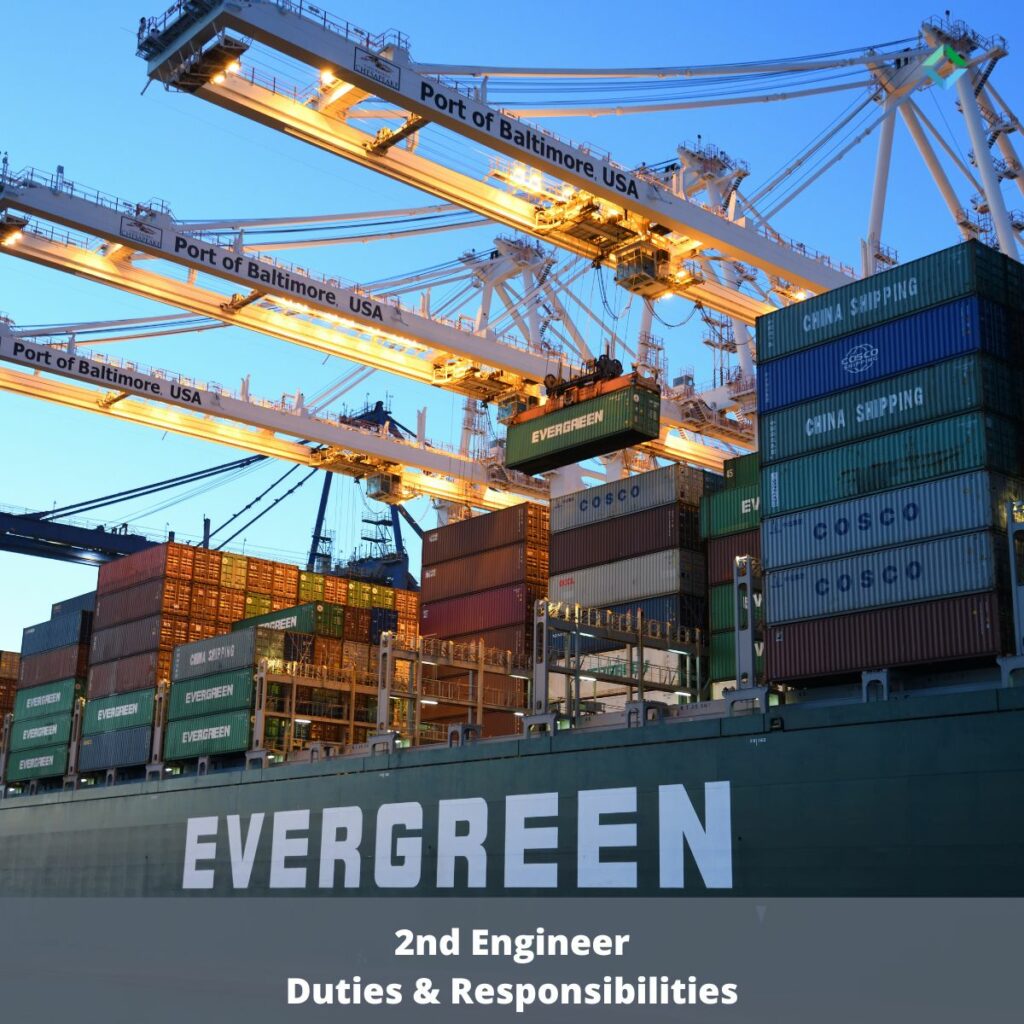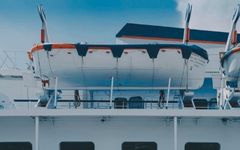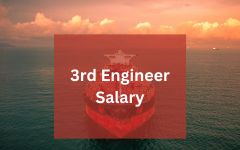Second Engineer Duties and Responsibilities
As a second engineer (2nd engineer) on board a vessel, you are a vital member of the ship's engineering team. You are responsible for ensuring that all machinery and equipment are in good working order and that the vessel is running smoothly. In this article, we will explore the duties and responsibilities of a second engineer and why they are essential for the safety and success of a vessel.
Duties and Responsibilities of a Second Engineer

Maintenance of Machinery and Equipment
As mentioned earlier, one of the primary responsibilities of a second engineer (2nd engineer) is to maintain all machinery and equipment on board the vessel. This includes engines, generators, pumps, compressors, and other mechanical and electrical systems. In this section, we will expand on the maintenance duties of a second engineer and provide some examples of the types of maintenance tasks that are involved.
Routine Maintenance
Routine maintenance is an essential part of the second engineer's duties. This involves performing regular inspections and preventative maintenance to ensure that the vessel's machinery and equipment are in good working order. Examples of routine maintenance tasks include:
- Changing oil and filters in engines and generators
- Inspecting and cleaning air filters
- Lubricating moving parts
- Checking fluid levels and topping up as required
- Inspecting and cleaning heat exchangers
By performing routine maintenance, the second engineer can prevent breakdowns and prolong the life of the vessel's machinery and equipment.
Corrective Maintenance
In addition to routine maintenance, the second engineer is also responsible for performing corrective maintenance when issues arise. This involves identifying and repairing any problems with the vessel's machinery and equipment. Examples of corrective maintenance tasks include:
- Troubleshooting electrical and mechanical systems
- Repairing or replacing faulty components
- Overhauling engines and generators
- Rebuilding pumps and compressors
- Aligning and balancing rotating machinery
Corrective maintenance is critical for ensuring that the vessel is operating safely and efficiently. It is essential that the second engineer is able to identify and repair problems quickly to minimize downtime and prevent more significant issues from arising.
Emergency Maintenance
In addition to routine and corrective maintenance, the second engineer may also be called upon to perform emergency maintenance in the event of a breakdown or other emergency. Examples of emergency maintenance tasks include:
- Repairing or replacing failed components
- Clearing blockages in pipes and pumps
- Patching leaks in piping and tanks
- Addressing electrical faults and short circuits
- Repairing hull damage
Emergency maintenance is critical for ensuring the safety of the vessel and its crew. The second engineer must be able to respond quickly and effectively to any emergency situation to minimize the risk of damage or injury.
Monitoring and Troubleshootin
Another important responsibility of a second engineer is monitoring and troubleshooting the vessel's systems to ensure that they are operating correctly. In this section, we will expand on the monitoring and troubleshooting duties of a second engineer and provide some examples of the types of tasks that are involved.
Monitoring
One of the primary responsibilities of the second engineer is to monitor the vessel's systems to ensure that they are operating safely and efficiently. This involves keeping a close eye on things like engine performance, fuel consumption, and electrical loads. Examples of monitoring tasks include:
- Recording engine performance data and analyzing trends
- Monitoring fuel levels and consumption rates
- Monitoring electrical loads and battery voltage
- Checking temperatures and pressures in key systems
By closely monitoring the vessel's systems, the second engineer can identify potential problems early and take corrective action before they escalate into more significant issues.
Troubleshooting
In addition to monitoring, the second engineer is also responsible for troubleshooting any problems that arise with the vessel's systems. This involves identifying the root cause of the issue and implementing a solution to address it. Examples of troubleshooting tasks include:
- Identifying the cause of an engine or generator failure and repairing it
- Diagnosing and repairing electrical faults and shorts
- Identifying and repairing leaks in piping or tanks
- Troubleshooting and repairing HVAC systems
Effective troubleshooting is critical for ensuring that the vessel is operating safely and efficiently. The second engineer must be able to quickly diagnose and repair problems to minimize downtime and prevent more significant issues from arising.
Preventative Maintenance
In addition to monitoring and troubleshooting, the second engineer is also responsible for implementing preventative maintenance measures to reduce the risk of equipment failure. This includes tasks like:
- Installing vibration sensors to monitor the condition of rotating machinery
- Implementing a regular oil analysis program to monitor engine health
- Implementing a regular maintenance schedule for critical systems
- Conducting regular inspections of key systems to identify potential issues
By implementing preventative maintenance measures, the second engineer can minimize the risk of equipment failure and prolong the life of the vessel's systems.
Supervision of Engineering Crew
As a second engineer, one of your key duties is to supervise the engineering crew on board the vessel. This involves ensuring that the crew is working safely and efficiently, delegating tasks and responsibilities, and providing guidance and training where needed. In this article, we will explore the supervision duties of a second engineer in more detail and provide examples of the types of tasks involved.
Delegating Tasks and Responsibilities
One of the most important tasks of a second engineer is to delegate tasks and responsibilities to the engineering crew. This involves assigning tasks based on the skills and experience of individual crew members, as well as ensuring that tasks are completed in a timely and efficient manner. Examples of tasks that may be delegated to the engineering crew include:
- Conducting routine maintenance tasks, such as oil changes, filter replacements, and lubrication of machinery.
- Conducting repairs and overhauls on machinery and systems, such as engines, generators, and pumps.
- Conducting inspections and tests on machinery and systems to ensure that they are functioning correctly.
- Cleaning and organizing the engine room to maintain a safe and efficient working environment.
By delegating tasks effectively, the second engineer can ensure that the engineering crew is working efficiently and that all necessary tasks are completed on schedule.
Providing Guidance and Training
Another important aspect of the second engineer's supervision duties is to provide guidance and training to the engineering crew. This involves mentoring and coaching crew members to improve their skills and knowledge, as well as providing training on new machinery and systems. Examples of guidance and training tasks include:
- Demonstrating best practices for conducting maintenance and repairs on machinery and systems.
- Providing guidance on safe working practices and procedures.
- Providing training on the use of new machinery and systems that are installed on the vessel.
- Coaching crew members on how to troubleshoot and diagnose problems with machinery and systems.
By providing guidance and training, the second engineer can ensure that the engineering crew has the skills and knowledge necessary to maintain and repair the vessel's machinery and systems safely and efficiently.
Ensuring Safety and Compliance
The second engineer is also responsible for ensuring that the engineering crew is working safely and in compliance with all relevant regulations and standards. This involves conducting regular safety audits and inspections, as well as providing training on safety procedures and emergency response. Examples of safety and compliance tasks include:
- Conducting regular safety drills and exercises to ensure that the engineering crew is prepared for emergencies.
- Inspecting machinery and systems to ensure that they are in compliance with relevant regulations and standards.
- Providing training on the use of personal protective equipment (PPE) and other safety gear.
- Ensuring that the engineering crew is aware of and follows all relevant safety procedures and protocols.
By ensuring safety and compliance, the second engineer can minimize the risk of accidents and injuries on board the vessel.
Safety and Environmental Compliance
As a second engineer, one of the most critical duties is to ensure the safety and environmental compliance of the vessel. This responsibility involves maintaining and operating machinery and systems safely, implementing and following safety procedures, and ensuring compliance with environmental regulations. In this article, we will explore the safety and environmental compliance duties of a second engineer in more detail, providing examples of the types of tasks involved, all while keeping in mind the importance of search engine optimization.
Maintaining and Operating Machinery and Systems Safely
One of the primary responsibilities of a second engineer is to maintain and operate machinery and systems safely. This responsibility involves conducting routine maintenance and inspections of machinery, identifying and repairing faults, and ensuring that machinery is functioning correctly. Examples of tasks that a second engineer may undertake to maintain and operate machinery and systems safely include:
- Conducting regular inspections of machinery and systems to identify potential faults and hazards.
- Implementing preventative maintenance measures to ensure machinery and systems remain in good working order.
- Conducting repairs and overhauls on machinery and systems to ensure they are functioning correctly.
- Ensuring that machinery and systems are operated safely and according to best practices.
- Implementing measures to minimize the risk of fire or explosion in the engine room.
By maintaining and operating machinery and systems safely, the second engineer can minimize the risk of accidents and injuries on board the vessel.
Implementing and Following Safety Procedures
In addition to maintaining and operating machinery and systems safely, the second engineer is also responsible for implementing and following safety procedures. This responsibility involves developing and implementing safety procedures, conducting regular safety drills and exercises, and ensuring that all crew members are aware of and follow safety procedures. Examples of tasks that a second engineer may undertake to implement and follow safety procedures include:
- Developing and implementing safety procedures for operating machinery and systems.
- Conducting regular safety drills and exercises to ensure that all crew members are aware of and can follow safety procedures.
- Ensuring that all crew members are equipped with the necessary personal protective equipment (PPE) and other safety gear.
- Conducting regular safety audits and inspections to identify potential hazards and areas for improvement.
By implementing and following safety procedures, the second engineer can minimize the risk of accidents and injuries on board the vessel.
Ensuring Compliance with Environmental Regulations
In addition to ensuring the safety of the crew, the second engineer is also responsible for ensuring compliance with environmental regulations. This responsibility involves implementing measures to minimize the impact of the vessel on the environment, monitoring the vessel's environmental performance, and ensuring compliance with relevant regulations. Examples of tasks that a second engineer may undertake to ensure compliance with environmental regulations include:
- Implementing measures to minimize the impact of the vessel on the environment, such as reducing emissions or implementing waste management practices.
- Monitoring the vessel's environmental performance and identifying areas for improvement.
- Ensuring compliance with relevant environmental regulations, such as MARPOL or local regulations.
- Conducting regular environmental audits and inspections to identify potential hazards and areas for improvement.
By ensuring compliance with environmental regulations, the second engineer can minimize the impact of the vessel on the environment and ensure that the vessel operates in a sustainable and responsible manner.
Documentation and Reporting
As a second engineer, one of the critical responsibilities is documentation and reporting. This duty involves maintaining accurate records of the vessel's operations, maintaining the vessel's technical manuals, and submitting timely reports to the appropriate authorities. In this article, we will explore the documentation and reporting duties of a second engineer in more detail, providing examples of the types of tasks involved, while keeping in mind the importance of search engine optimization.
Maintaining Accurate Records of the Vessel's Operations
Maintaining accurate records of the vessel's operations is crucial for ensuring the safety of the vessel and complying with regulatory requirements. The second engineer is responsible for maintaining records related to the vessel's machinery, fuel consumption, maintenance, and repairs. Examples of tasks that a second engineer may undertake to maintain accurate records of the vessel's operations include:
- Recording the vessel's fuel consumption and monitoring the fuel levels to ensure that the vessel does not run out of fuel.
- Keeping records of machinery maintenance, including when maintenance was performed and what work was completed.
- Recording any repairs or overhauls completed on machinery or systems and their associated costs.
- Maintaining records of the vessel's electrical and mechanical systems, including their maintenance schedules, performance data, and any issues encountered.
By maintaining accurate records of the vessel's operations, the second engineer can provide critical information to the crew and management, and ensure that the vessel operates safely and efficiently.
Maintaining the Vessel's Technical Manuals
The second engineer is also responsible for maintaining the vessel's technical manuals, which provide detailed instructions for the operation, maintenance, and repair of the vessel's machinery and systems. Examples of tasks that a second engineer may undertake to maintain the vessel's technical manuals include:
- Ensuring that all technical manuals are up to date and that they reflect any changes or updates made to the vessel's machinery or systems.
- Ensuring that all crew members have access to the technical manuals and are familiar with their contents.
- Working with the vessel's management to obtain new or updated technical manuals as needed.
By maintaining the vessel's technical manuals, the second engineer can ensure that the crew has the information they need to operate and maintain the vessel's machinery and systems correctly.
Submitting Timely Reports to the Appropriate Authorities
The second engineer is also responsible for submitting timely reports to the appropriate authorities. These reports may include environmental reports, maintenance reports, or reports related to any incidents or accidents that occur on board the vessel. Examples of tasks that a second engineer may undertake to submit timely reports to the appropriate authorities include:
- Ensuring that all required reports are submitted on time and in the appropriate format.
- Keeping accurate records of any incidents or accidents that occur on board the vessel and reporting them to the appropriate authorities.
- Ensuring that all crew members are aware of the reporting requirements and that they provide the necessary information.
By submitting timely reports to the appropriate authorities, the second engineer can ensure that the vessel complies with all regulatory requirements and operates safely and efficiently.
Why Second Engineer Duties and Responsibilities are Important
The role of a second engineer is a critical one in the safe and efficient operation of a vessel. The second engineer duties and responsibilities are extensive and varied, and each of them plays a significant role in ensuring the vessel's safe operation, compliance with regulations, and optimal performance. In this article, we will explore why second engineer duties and responsibilities are important, highlighting the critical nature of the second engineer's role and the potential risks that can arise when these duties are not fulfilled. We will also use relevant keywords such as "second engineer duties and responsibilities" to ensure that this article is search engine optimized.
Ensuring the Safe Operation of the Vessel
One of the most important reasons why second engineer duties and responsibilities are important is that they are critical for ensuring the safe operation of the vessel. The second engineer is responsible for the maintenance and operation of the vessel's machinery and systems, including the propulsion system, electrical systems, and auxiliary machinery. A failure of any of these systems can have serious consequences, including accidents, loss of life, and environmental damage.
For example, if the propulsion system fails, the vessel may lose power, become disabled, and be at risk of collision or drifting aground. If the electrical system fails, critical systems such as navigation, communications, and safety equipment may be compromised. The second engineer's responsibilities in maintaining and operating these systems are essential for ensuring the safety of the vessel, crew, and the environment.
Compliance with Regulations
Another critical reason why second engineer duties and responsibilities are important is that they are essential for compliance with regulations. The maritime industry is heavily regulated, and vessels must comply with a wide range of national and international regulations. The second engineer is responsible for ensuring that the vessel complies with these regulations, which include safety, environmental, and operational requirements.
For example, the International Convention for the Safety of Life at Sea (SOLAS) is a comprehensive set of safety regulations that apply to all vessels engaged in international voyages. Compliance with SOLAS is mandatory, and the second engineer is responsible for ensuring that the vessel meets all SOLAS requirements. Failure to comply with these regulations can result in fines, detention of the vessel, and even criminal charges.
Optimal Performance
Finally, the second engineer's duties and responsibilities are important for ensuring the vessel's optimal performance. The second engineer is responsible for maintaining and operating the vessel's machinery and systems to ensure that they operate efficiently and effectively. This can include tasks such as optimizing fuel consumption, reducing emissions, and ensuring that the vessel operates at maximum capacity.
For example, if the vessel's engines are not properly maintained, they may consume more fuel than necessary, resulting in increased operating costs and environmental damage. If the vessel's systems are not optimized, the vessel may not be able to achieve its maximum speed or performance, resulting in delays and increased costs. The second engineer's responsibilities in maintaining and operating the vessel's machinery and systems are essential for ensuring optimal performance and minimizing operational costs.






